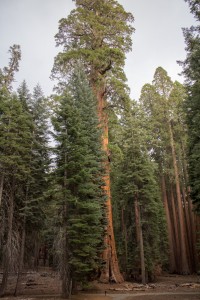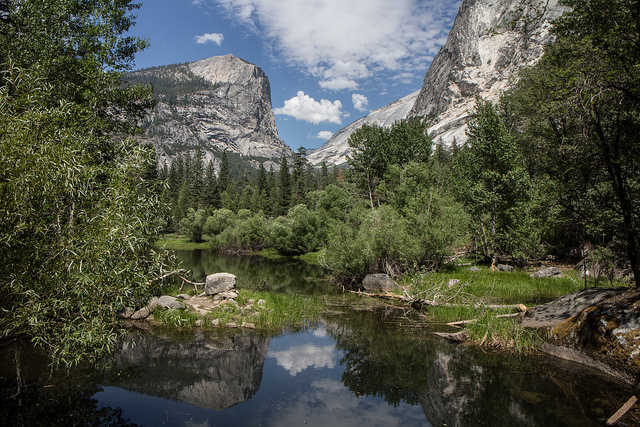I am so excited to share with you the final version of this project, which has been in the works for about a year and half!
Multimedia installation for web and iPad app Explore John Muir’s Yosemite, illustrates the writings of naturalist and conservationist John Muir through interactive photography and music, offering an engaging new interpretation of Muir’s vision of nature.
The 2014 launch of Explore John Muir’s Yosemite commemorates the centennial of John Muir’s death, the 150th anniversary of the Yosemite Grant, and the 50th anniversary of the Wilderness Act.
ABOUT THE PROJECT
Back in June ’13, I traveled with my partner John Resig to Yosemite and nearby Sequoia National Park to capture about 1,000 videos, photographs, and audio recordings of sites that were important to John Muir. You might have seen my travel diary on this blog from this special trip.

Visiting the site of John Muir’s cabin at Yosemite Falls.
Over the following several months, I designed and constructed an interactive media experience integrating selections from Muir’s essays with my photography and a non-linear score I composed and produced specially for this project. John then coded the Javascript engine that drives the animations and interactivity in the installation.
I was honored to exhibit the beta version of Explore John Muir’s Yosemite for renowned Muir scholars last March at the 2014 international John Muir Symposium at The University of Pacific in Stockton, CA, with support from NYU’s Student Senators Council Academic Conference Fund Grant.
Since then, John and I have been refining things under the hood and converting the browser experience into a visually immersive iPad app, which I’m excited to report is now available as a free download in the App Store.
If you like the iPad app, please consider leaving a review in the App Store.
Enjoy the finished product! I look forward to hearing your thoughts.
Production of Explore John Muir’s Yosemite was supported in part by a Challenge Grant from New York University’s Steinhardt School of Culture, Education, and Human Development.


